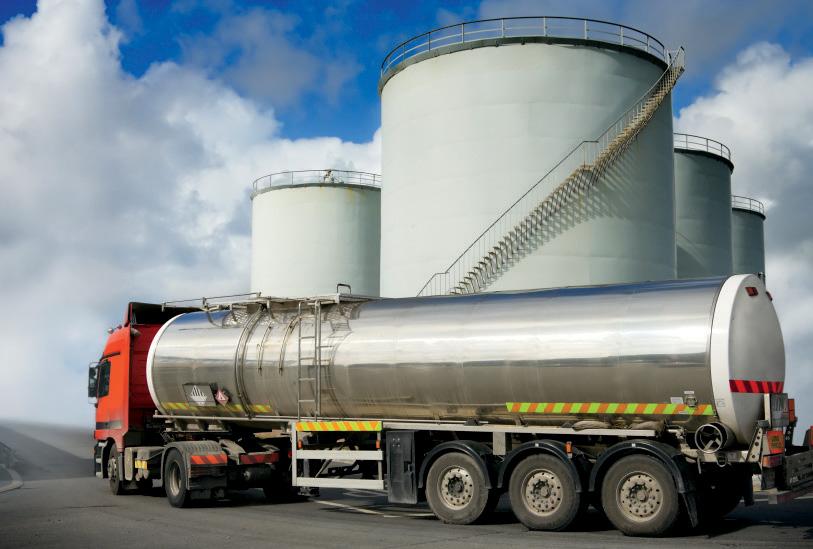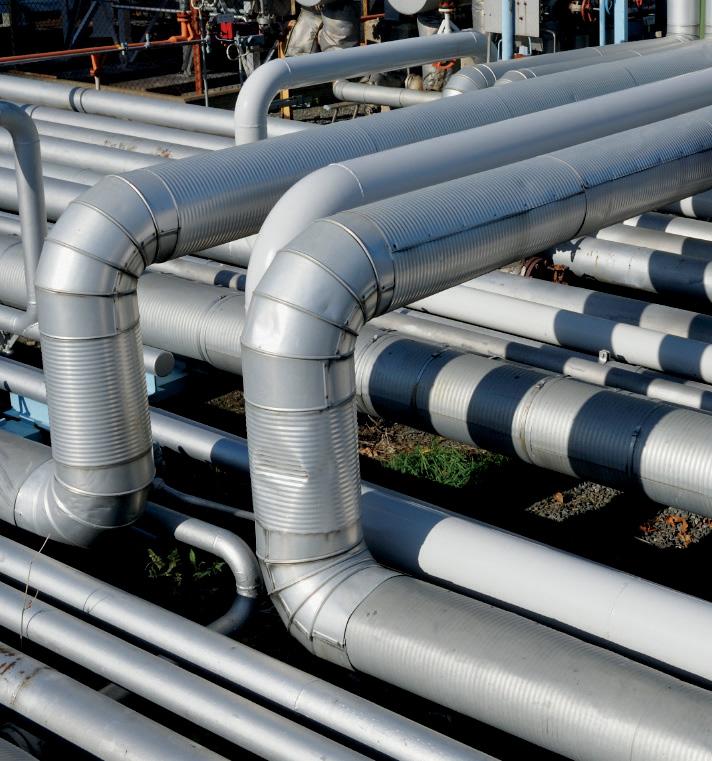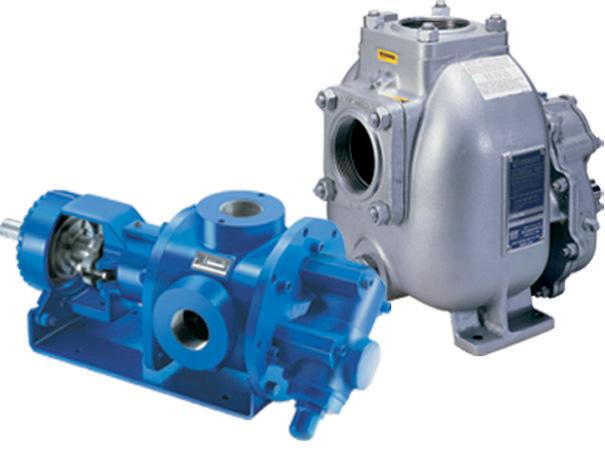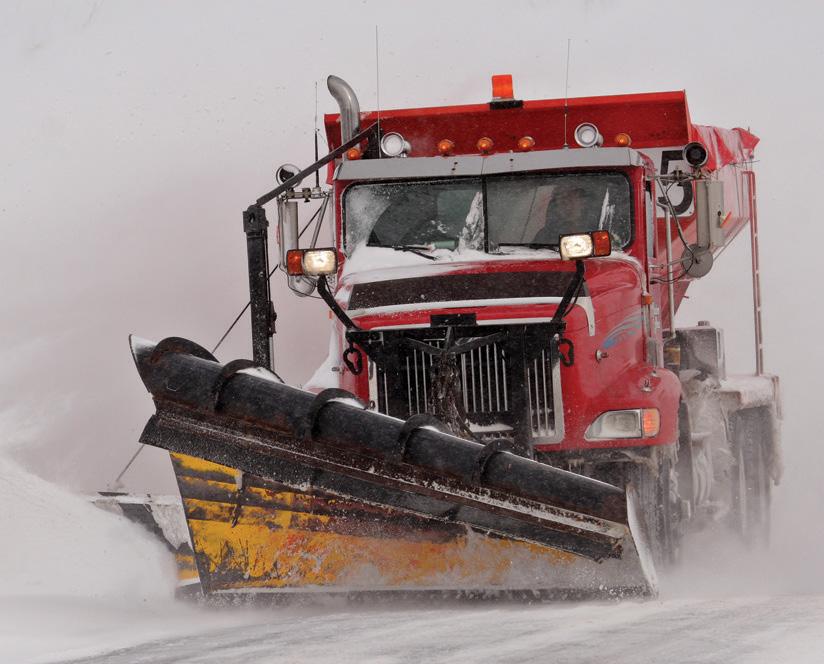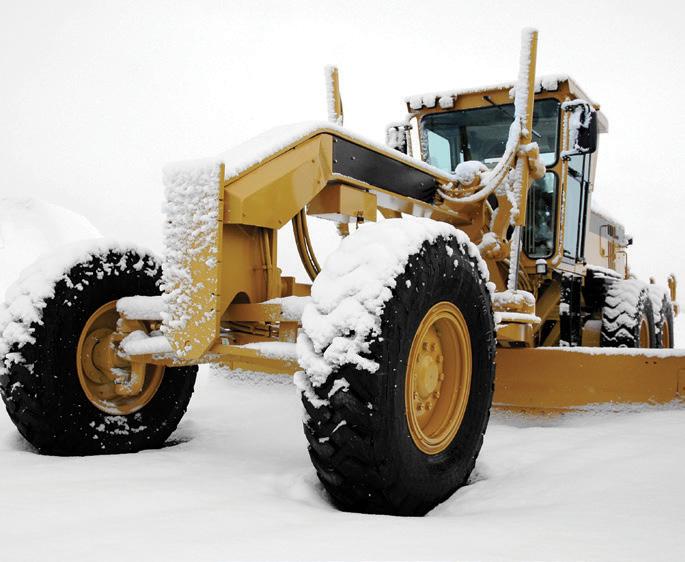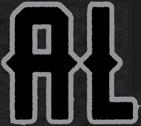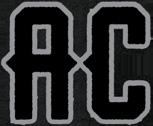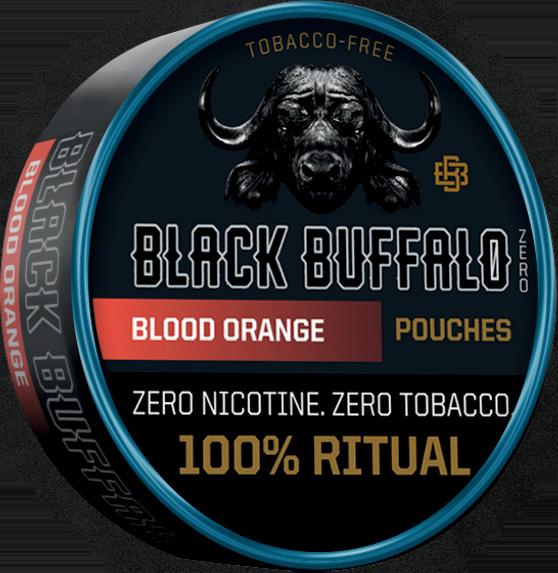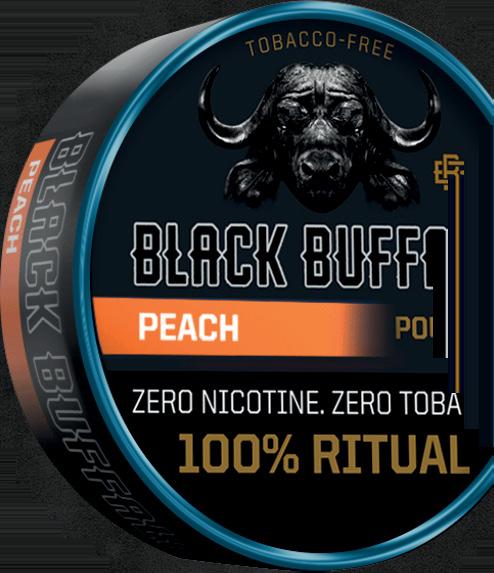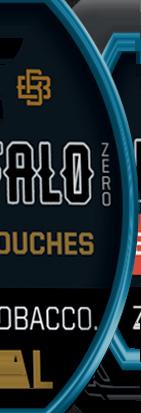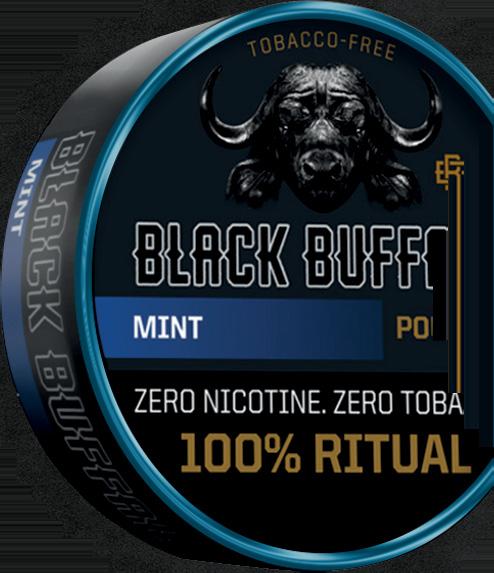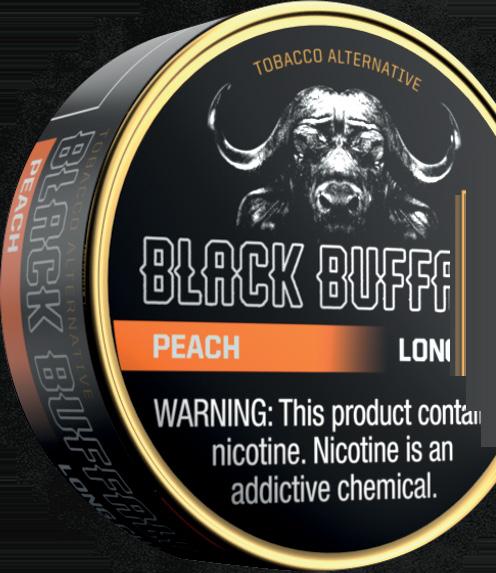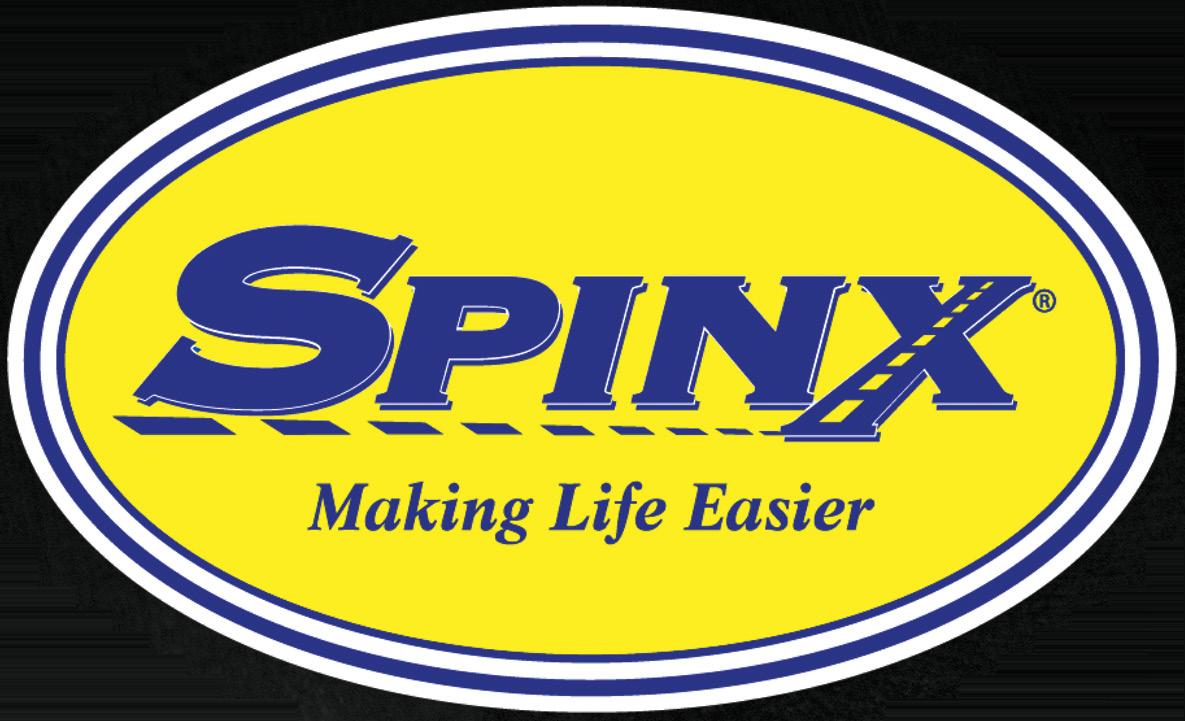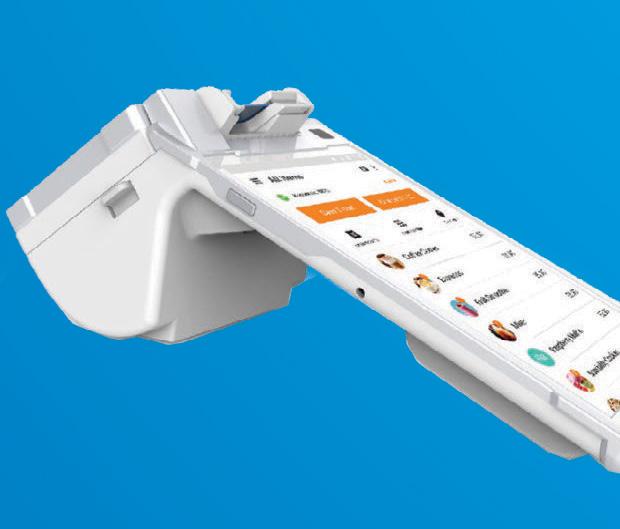






FMN is excited to announce the inaugural 2022 FMN Fuels Innovator of the Year Award winners, recognizing convenience retailers in two size categories: 100 or more stores and fewer than 100 stores. This award is based on overall fuel excellence, technology and operational efficiency. The winner in the above 100 store category is La Crosse, Wisconsin-based Kwik Trip Inc. Greenville, South Carolina-based The Spinx Company is the winner of the fewer than 100 stores category.
Kwik Trip/Kwik Star operates over 800 stores in Wisconsin, Minnesota, Iowa and Illinois. It offers seven grades of gasoline (including E85 and ethanol free); six grades of diesel and DEF; compressed natural gas; liquefied natural gas; propane and electric charging.
Spinx operates over 80 stores throughout South Carolina. It offers five grades of gasoline (including E85 and ethanol free); two grades of diesel; kerosene and EV charging.
Leaders from both companies accepted the award at this year’s NACS Show, held October 1-4 in Las Vegas, and participated in a discussion about their fueling/EV philosophies, program structure, management and best practices. You will find an overview of that discussion in this issue.
Why did we create the award? Fuels Market News Magazine already reviews the top retail fueling performers through the OPIS/FMN Fuel Leaders special issue, which, using OPISdeveloped algorithms, ranks a range of retailers with a core focus on fueling efficiency. While this is excellent information, we decided that it would be appropriate to take another look at these companies relative to innovation within the fuel products and EV charging opportunities supplied to their customers and/or their use of
technology. The goal is to recognize them for exploring transportation energy beyond the norm, while providing other retailers with the rationale for pushing boundaries and some best practices.
The selection process began with the OPIS/FMN 2021 Fuel Leaders, which showcased the top 50 retail fueling operations according to an involved OPIS algorithm aimed at efficiency.
FMN staff then went through that list and broke it down into companies with over 100 and under 100 sites, and then individually reviewed each company to determine if it offered more than the standard three grades of gasoline and one grade of diesel. These companies were then presented to the FMN Editorial Council and a diverse group of industry consultants, technology writers, columnists, product distributors and biofuel representatives, who were allowed to each cast three votes for each category. Two clear winners were identified.
The retail fueling industry is facing numerous challenges both with the industry as it is today and the push for net-zero transportation tomorrow. Retailers will need to be innovative, efficient and aggressive to meet these challenges. Let us celebrate innovative excellence and learn from these companies.
Keith Reid Editor-in-Chief (847) 630-4760 kreid@fmnweb.com
Kim Stewart Editorial Director (703) 518-4279
kstewart@convenience.org
Lisa King Managing Editor (703) 518-4281 lking@convenience.org
John P. Nesbit and Kevin Rice
DESIGN Imagination www.imaginepub.com
Cover image by Mark Squire Photography for NACS
Ted Asprooth (847) 222-3006
tasprooth@convenience.org
Stephanie Sikorski Publisher (703) 518-4231
ssikorski@convenience.org
Nancy Pappas Marketing Director (703) 518-4290
npappas@convenience.org
RETAILER/MARKETER MEMBERS
Josh Asche, senior vice president, COO, Hy-Vee Fast & Fresh; Mark Fitz, president, Star Oilco; Derek Gaskins, chief marketing officer, Yesway; Kevin Smartt, CEO and president, Texas Born (TXB)
Regina Balistreri, director of marketing, ADD Systems; Gary Lackore, director of sales –Americas, MidContinental Chemical Company Inc.; Kaylie Scoles, marketing director, RDM Industrial Electronics Inc.; Jen Threlkeld, product marketing manager, Dover Fueling Solutions
Keith Reid is the editor-in-chief of Fuels Market News. He can be reached at kreid@fmnweb.com.

by the National Association of Convenience Stores (NACS), Alexandria, Virginia, USA.
Fuels
POSTMASTER:
Contents
Subscription
circulation@fmnweb.com
Fuels
Street, Alexandria, VA, 22314-2792 USA.
Convenience
Alexandria, VA,
1600 Duke Street, Alexandria, VA, 22314-2792
Modern business presents unlimited opportunities for growth. Let ADD Systems help you realize all those possibilities as we meet today’s challenges of customer experience, speed, accuracy, mobility, and ever more important, scalability.

ADD Systems has been providing solutions to the energy distribution industry –retail and wholesale fuel, propane, convenience stores and more – since 1973.
Learn

New technology often drives us to consider doing something different, something com pelling. If we take a minute and look around, nothing is truer in the convenience retail industry than this—there are new fuel dispensers, remote monitoring solutions, pointof-sale systems and data analytics capabilities. Despite such advance ments, our industry historically has been slow to evolve, even with great new capabilities such as mobile apps, software-as-a-service solutions (SaaS) and products that embrace Big Data. Anyone who has embarked on the journey of deploying a new system within their organization has faced the risks and costs of growth; however, President John F. Kennedy once said, “There are risks and costs to action. But they are far less than the long-range
risks of comfortable inaction.”
Taking a short stroll around the technology section of the NACS Show is both exciting and a bit scary. There are so many new technologies that deciding which one might have a com pelling impact on your profitability can be overwhelming. Let’s consider just one example—the remote mon itoring of your automatic tank gauge system.
Gilbarco Veeder-Root, Dover Fueling Solutions, Titan Cloud, MyTankInfo, Warren Rogers, Canary Compliance, Leighton O’Brien, Emerson, Tanklogix and Centeron all have solutions. That’s 10 choices and the list isn’t com prehensive. Couple this with other important systems necessary to a fueling retailer, such as point-of-sale systems, back-office software, fuel logistics, hedging solutions and asset
management solutions. Without a ton of expertise, you might get lucky and have great results. Or, you might have an improved operation but still come up short of the potential. And in the worst-case scenario you have a poten tial recipe for disaster. So, how do you make the process manageable?

“Best in class” is a common descriptor for industry solutions. Sometimes the descriptor is even accurate. However, just because one vendor is best in class for a given capability within their portfolio doesn’t mean they are best in class for the rest of their offering. Continuing with the remote monitor ing example, some of the solutions are provided by the hardware’s man ufacturer, and others are staffed with data analysts that can provide the first level of triage for alarms as they occur. And some businesses would prefer to use their own staff to engage alarms and manage their own service teams. Deciding how to choose the best solu tion for your own needs is extremely important. A likely goal would be to find a solution that meets your oper ational philosophy. However, the


solution provider might be able to offer compelling reasons to make a shift in how you currently do business to fit their model.
So, how do you make such determina tions? You start by bringing together your subject matter experts from each discipline within your organization. This is always a challenge—time is always tight. Then you have the person ality and organizational issues—whose opinions will be more important? The operations team? Your financial team? Your compliance team? Your man agement team? Who should drive the decision criteria? Who has the most to gain vs. the least?
The reality is that everyone will likely be impacted, so having a common shared direction with solid success criteria is of the utmost importance. Normally that requires an internal champion for the effort. Who is the right person for that job? Will the effort take away from their daily business responsibilities? If so, how much? Establishing an RFP-style approach will, at a minimum, give you solid direction to address specific pain points within the business.
Organizations often struggle with what solution to choose, even with the most informed decisions. How often have you heard or unfortunately) expe rienced that the “informed and vetted” decision wasn’t exactly as hoped. Now you’re obligated to a contract term or hardware replacement before you can try something else. In a nutshell, there are many factors to consider, and it’s
difficult to find someone within your organization who has knowledge of every solution out there. Some do it and are successful; most do not. So, what was the cost of either investing in detailed needs analysis or worse, finding out it isn’t what you expected once deployed? Perhaps consider out sourcing to gain that broad but deep knowledge base.
Certainly, outsourcing isn’t always the serendipitous solution, although in many cases it has compelling value. Organizations have certainly navigated these waters internally with success. However, the number of technology solutions has grown dynamically. And the complexity of these systems also has grown dynamically.
Any organization preparing to embark on a new system consideration needs to evaluate what the best path forward is for their own businesses. It seems like a simple comparison of costs, right? Well, that is obviously not the case anymore. Whatever way makes the best sense for your business, internal or external, seek out experts.
“Change almost never fails because it’s too early. It almost always fails because it’s too late,” said Seth Godin, American business entrepreneur and author. Our industry has some great emerging technology. Embrace change early and often. Use your internal or external resources to the best of their ability. Be sure to evaluate what are the most vital needs of your business through a detailed analysis of what is out there. This will always require investments in time and money. Just take careful consideration of who has the proper expertise to guide you down the path of least risk .
John Nesbit is the chief operating officer for APEC, which has offices in Atlanta and Houston. Nebsit has over 30 years of multifaceted experience in the industry and is a highlymotivated problem solver. Contact him at JNesbit@TheAPECgroup.com.

Just because one vendor is best in class for a given capability within their portfolio doesn’t mean they are best in class for the rest of their offering.”








Integrating forecourt and backcourt loyalty programs can increase customer engagement.
BY KEVIN RICETo stand out from the com petition and build consumer loyalty, many convenience retail marketers have adopted fuel brand loyalty programs and platforms focused on fuel savings. However, because these programs are not integrated with independent c-stores, marketers are limited, and the customer experience is often compli cated with separate loyalty programs. The solution is an integrated loyalty
program that seamlessly connects fore court and backcourt offerings in one easy-to-use experience.
For the past decade, fuel marketers have benefited from consumer fuel purchases to maintain revenue and margin growth as the cost of fuel continues to climb. But with a highly competitive market and a consumer traditionally agnostic to fuel brands, building a business on forecourt sales is limited.
Loyalty programs are a proven way to grow your business. In fact, 78% of consumers as reported in a 2019 Salesforce survey are more likely to buy from a brand with a loyalty program. And while fuel brand (Exxon, Chevron, etc.) loyalty programs provide valuable incentives for customers, the chal lenge with many of these programs is that their singular focus on winning over brand-agnostic consumers comes at the cost of user experience and preferences.

These coalition programs invite any marketer that sells a specific fuel brand to participate, which has allowed fuel brands to build a national network of different independent fuel outlets. But these programs are not necessar ily focused on building loyalty to a single-site operator or a regionalized group of branded sites operated by a jobber or marketer. While these pro grams do offer consumers value, they are doing very little to build consumer loyalty to the total brand.
In fact, many of the mobile appli cations that support these fuel brand loyalty programs lack any type of individualized retailer branding what soever. For example, a Southeast-based
convenience store and wholesale fuels company that contracts with a major oil brand has two separate rewards experiences on the same property. To receive loyalty benefits, custom ers must switch between using the fuel-branded rewards program and the separate c-store rewards app to access features such as order ahead. This cre ates friction in the user experience and limits opportunities for cross-selling across the forecourt and backcourt.

These limitations have led many mid size and larger innovative marketers like Kwik Trip, Rutters and Wawa to create their own loyalty programs and mobile applications that feature both fuel savings and in-store offerings (food, unique offers). From a consumer perspective, this is expected: “I should be able to apply my fuel rewards to in-store purchases. After all, it’s the same business, right?”
In addition, these customized loyalty programs fully reflect the uniqueness of the marketer brand that consum ers have grown to recognize. Logos, imagery, colors, fonts and even the look and feel of the digital experience are completely built around the marketer brand, which can and should include the fuel brand if locations carry a major oil banner. The opportunity for major oil is to create a more open structure for branded marketer integration and to provide support for integrations, combining the power of fuel rewards seamlessly with varied backcourt offer ings. Shell’s API catalog, with loyalty APIs for redemption, offers and points balance is a good example of the types of tools that can help build an inte grated experience.
This investment in a customized loyalty experience can create more per sonalized digital marketing campaigns that drive engagement through greater
relevance and better align with the total consumer journey. Marketers are then able to leverage this technology to better understand consumers and improve engagement and average order value (AOV), both at the pump and in the store. This cannot be executed in the disparate technological environ ment of today.
For other channels such as restaurants, grocery and non-fuel convenience stores, creating a seamless experience is more straightforward. Connecting forecourt and backcourt offerings in one easy-to-use experience requires an investment in backend technology integration, navigating a technology stack that supports the fuel pump terminals, forecourt controller, in-store POS systems and back-office software. This can affect the implementation of fuel brand loyalty programs and even templated, white-label loyalty mobile applications.
By providing integration support for their loyalty programs, major oil brands can help independent retailers grow their brands and increase sales in both the forecourt and backcourt. Only through more integrated applications will the digital experience delivered by branded fuel marketers more closely align with the total forecourt and back court consumer journey.
With the complexities involved, it is essential for both major fuel brands and marketers to gain insight from industry experts. With a complete knowledge of the forecourt and back court consumer journey, tech solution landscape and overall channel, indus try experts can offer guidance on the best options that are compatible with existing technologies, while also deliv ering a seamless customer experience that drives engagement, AOV and ultimately comp sales.
Kevin Rice is the executive vice president of Bounteous. Founded in 2003 in Chicago, Bounteous is a leading digital innovation partner that co-innovates with the world’s most ambitious brands to create transformative digital experiences. With services in strategy, experience design, technology, analytics and insight and marketing, Bounteous elevates brand experiences through technology partnerships and unparalleled platform expertise. To learn more, visit www.bounteous.com.
Investment in a customized loyalty experience can create more personalized digital marketing campaigns that drive engagement through greater relevance and better align with the total consumer journey.”
The company was founded by the Hansen and Zietlow families in 1965 when the first store opened in Eau Claire, Wisconsin. In 1993, Kwik Trip became Kwik Star for the sites that oper ate in Illinois and Iowa. Currently, Kwik Trip | Kwik Star operates over 800 stores in Wisconsin, Minnesota, Iowa and Illinois. In 1997, the com pany opened its first retail carwash, which is now a core component of the operations. The Zietlow family became the sole owner in 2000.
Kwik Trip offers a range of store-branded prod ucts including Glasers Donuts, Karuba coffees and Nature’s Touch branded bottled water, juice and dairy products. In 2003, the company initi ated its Hot Spot hot food program, and in 2005, launched a fresh food program centered on openair cases selling products that include salads, produce and sandwiches. In 2019, it introduced fresh fried chicken, and in 2020, it launched Take Home Meals company wide.
The Kwik Rewards program allows customers to earn free food and merchandise and receive cents-off fuel discounts when buying qualifying items, which can be redeemed for instant savings at the pump.
As well-known as the company is for its in-store offerings, it has received equal attention for its fuel program. Kwik Trip | Kwik Star goes out of its way to serve both the consumer and commercial customer. It currently offers seven grades of gaso line (including E85 and ethanol free), six grades of diesel and DEF, compressed natural gas, liquefied natural gas, propane and electric vehicle charging.
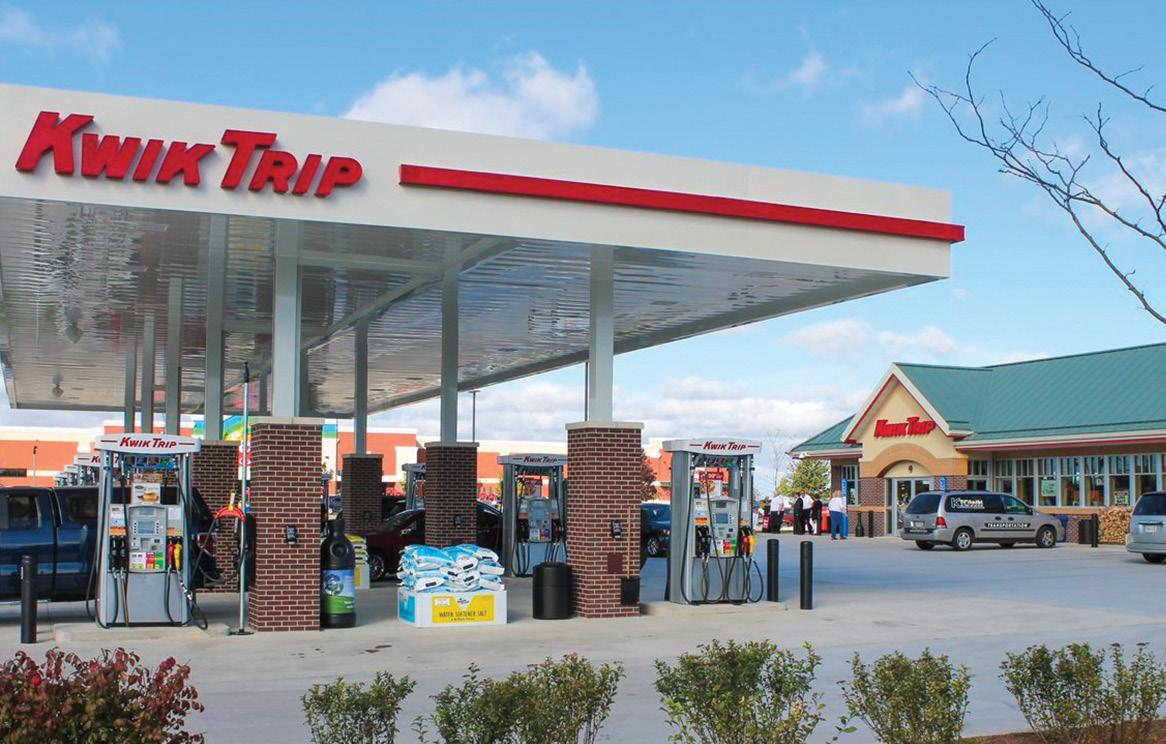
Kwik Trip | Kwik Star is active in the commu nities it serves. Its Fundraising Card Program supports both carwash and gift-card fundraising. In both cases, cards can be purchased that return the profits to the fundraising organization. The company donates to worthy causes through its Neighbors Helping Neighbors, Kwik Trip Kares and Kwik Trip sponsorships. As the company notes, “An important goal of Kwik Trip is to make a positive difference in the lives of others and in our communities.”
Stewart Spinks formed Spinx in 1972 with a home heating oil delivery service and one con venience store in Greenville, South Carolina. Today, celebrating its 50th anniversary, Spinx operates more than 80 convenience stores in South Carolina and employs over 1,400 associates through its stores, food operations and related businesses.
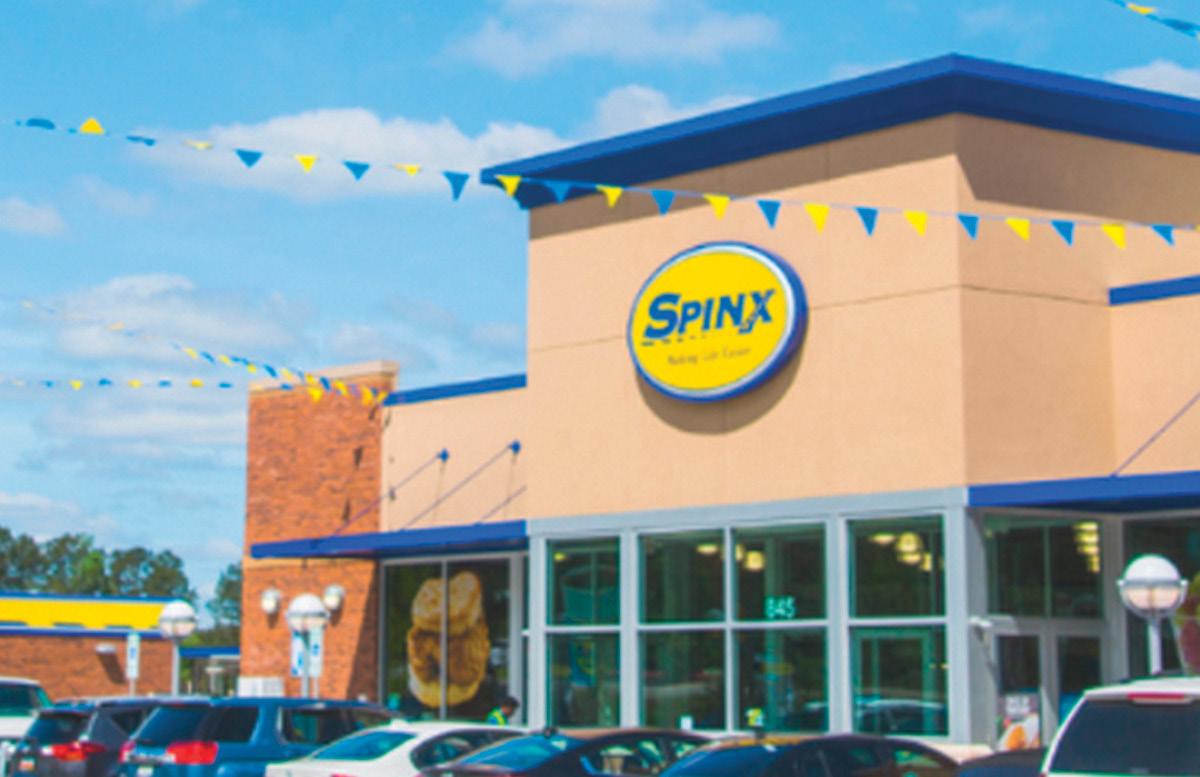
Inside the store, the company offers a range of fresh food, beverages and snacks. This includes a variety of fried chicken offerings, a biscuit-centered breakfast program, numerous hot sandwiches, wraps and hot dogs.
To expand its foodservice options, the company launched its Cluck Truck food truck, which can cater to various events serving fried chicken, sides, drinks and more. Spinx has an aggressive carwash program that includes internal washes and club memberships.
On the loyalty front, Spinx Xtras allows a cus tomer to earn five cents off per gallon for every
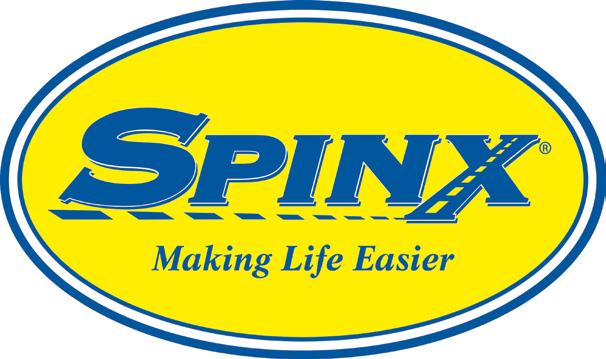
$25 spent inside of Spinx c-stores. Customers can also purchase spe cial items from the store for extra savings. And the customer can use the Xtras Card as a debit card and save five cents off per gallon with every fill up.
With fueling, Spinx offers five grades of gaso line (including E85 and ethanol free), two grades of diesel, kerosene and electric vehicle charging. Fueling options serve both consumer and fleet operators, as does the carwash operations.
Spinx has been giving back to the communi ties it serves since its beginnings in the early 1970s. The Spinks Family Foundation was established to align with the company’s char itable giving mission. As the company notes: “Our philanthropic focus is growing strong and healthy communities where we live, work and play. We support many events and charitable organizations that share our passion for commu nity. Through our donations to schools, the arts, hunger prevention, athletics, health care, schol arships, addiction prevention and intervention, mentoring, youth clubs and other communityfocused initiatives, we hope to touch the lives of people in our communities and bring a little extra happiness to them and their families.”

Fuels Market News Magazine awarded the 2022 FMN Fuels Innovator of the Year Award on October 3 at the 2022 NACS Show, held in Las Vegas. A lively discussion followed the formal award presentation with Jeff Reichling, Kwik Trip Inc.’s general man ager of fuel operations, and Jim Weber, The Spinx Company’s executive vice president of merchandise and marketing. Here are some of the highlights.
FMN: HOW DO YOUR COMPANIES VIEW FUELING/ CHARGING ON THE FORECOURT COMPARED TO THE REST OF YOUR OPERATIONS “INSIDE THE BOX”?
Reichling: At Kwik Trip we understand that conven tional fuels—alternatives as well—play a large part in the marketplace. We try to stay ahead of what is coming next or what our guests are going to want down the line. I think we’ve done a great job inside the box being innovative for a lot of years. We’re trying to match that same intensity on the outside. Weber: Fuel is very prominent for us at Spinx. It starts with the forecourt—keeping it maintained, well cleaned, up to date with technology. It’s our big gest category. We fuel 22 million people a year. So, to me, it is category management on the retail side and day-to-day blocking. That customer experience when you get on the lot—clean, neat, your equip ment working—that’s big.
We have a good system where our maintenance and facilities tie into our operations group. So, the real-time maintenance and upkeep of our forecourt is paramount daily. I think the other big thing is just having a separate retail pricing unit as its own group that allows focus on the competition and making sure we’re well priced. And the third component for us is the way we tie it into loyalty. That is a big thrust and has been for many years, so you get the additional savings and efficiency for the customer.
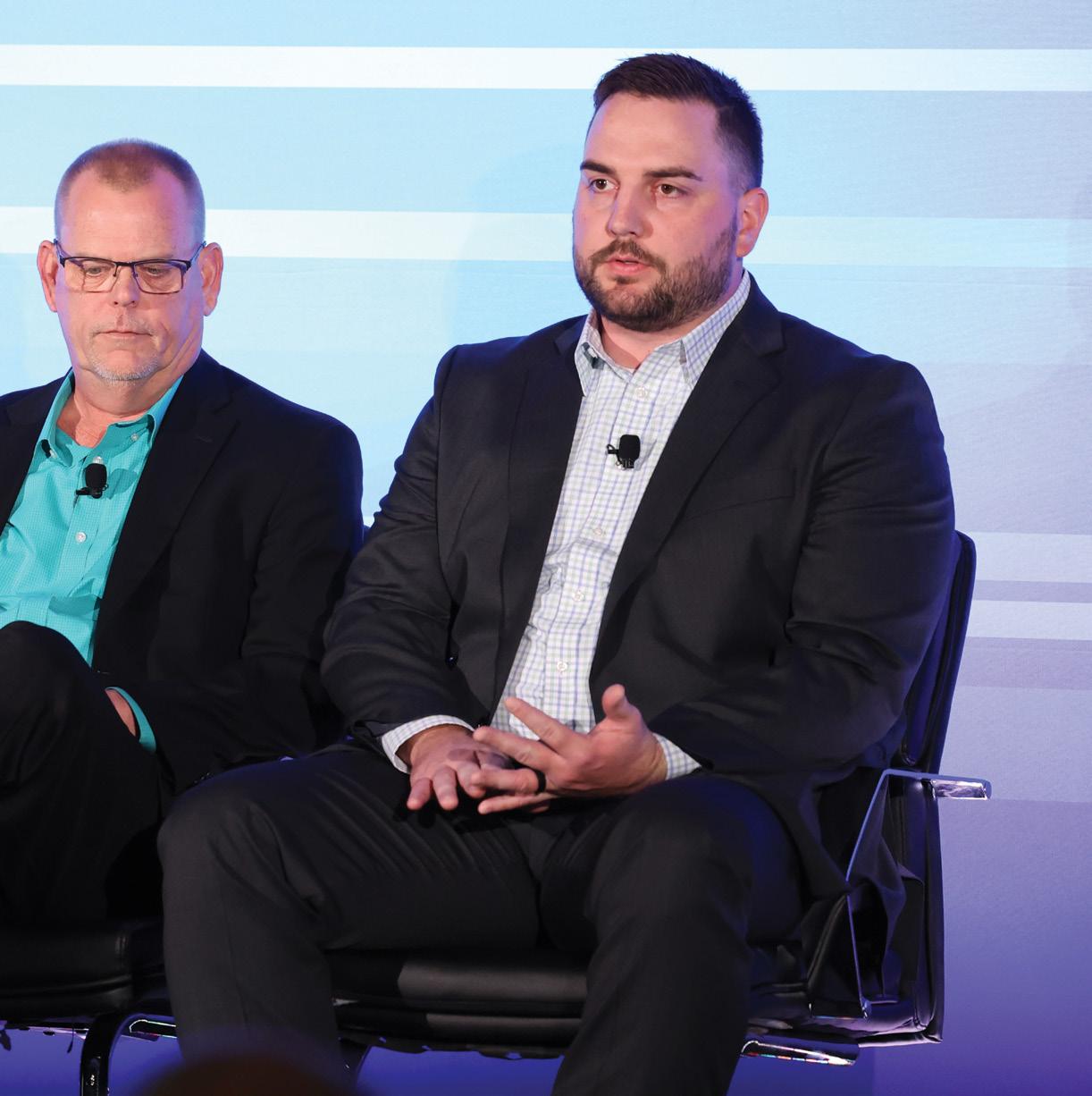
FMN: YOUR COMPANIES WERE OUT IN FRONT OF EXPANDED FUEL OFFERING FOR YEARS—WELL AHEAD OF CURRENT PRESSURES. WHAT DROVE THAT?
Weber: For me that answer is easy—Stewart Spinks. Stewart has been the quintessential innovator for years, almost to the point where you must bring him back in sometimes. Stewart loves to dabble in new things, and when I say dabble, he likes to get in there, invest in it to a small degree to where he won’t break his leg but might skin his knee. Ethanol has been a great example. We may start at a small scale and watch it for years. We believe that with the innova tion, having real numbers to watch in your own P&L and understanding [the process] of the innovation has a high value.
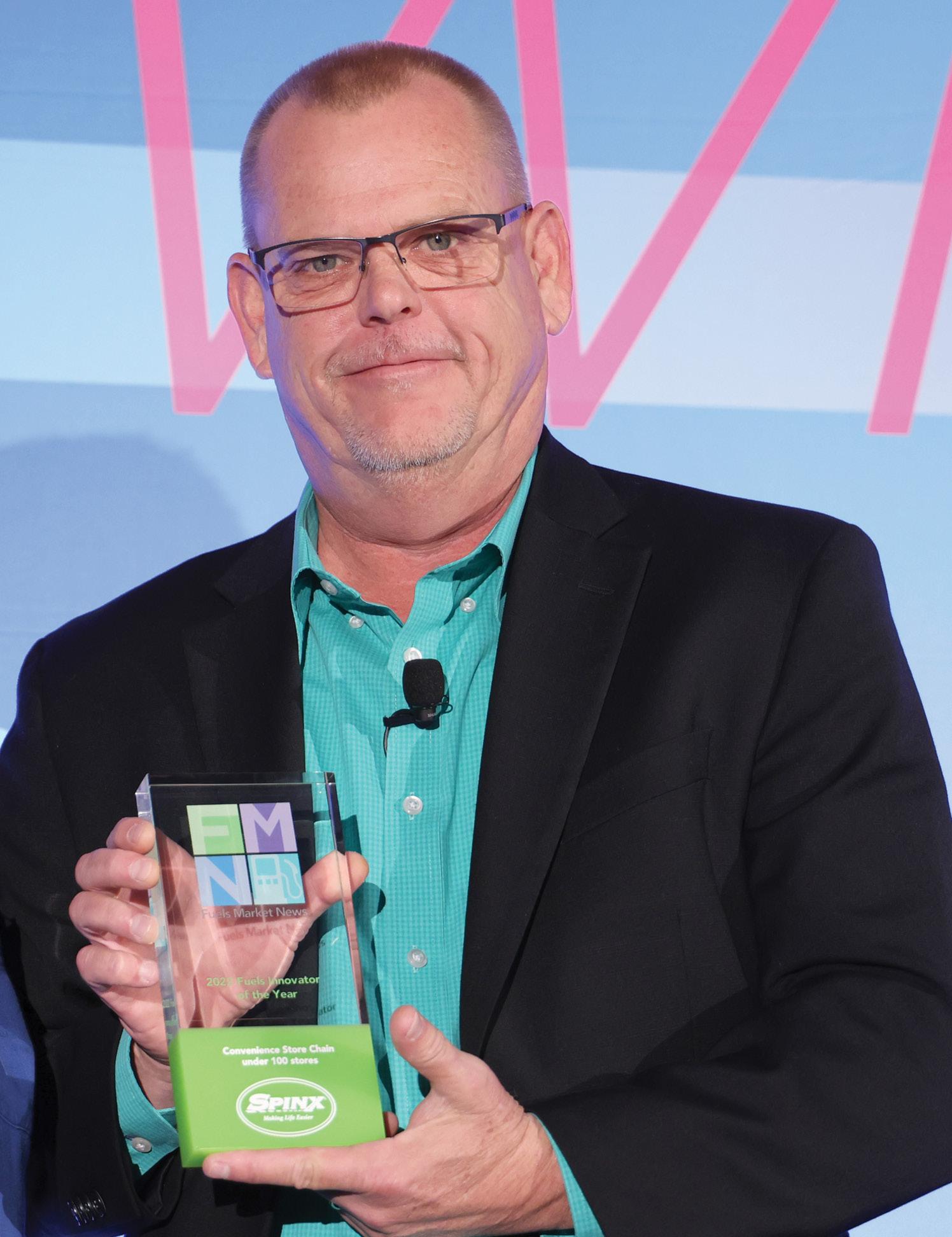
Reichling: It’s along the same lines at Kwik Trip. Our owner Don Zietlow and his family have been extremely supportive and aggressive on growth for a lot of years. I think our biggest challenge is not getting approval or funding to take on these new initiatives but rather how we’re going to meet the timeline and expectations that Don sets. And that’s a good problem to have in a growing company.
Reichling: Like everybody else, we’re trying to keep pace with what technology offers and what’s valuable to our company. From a logistics standpoint, it cer tainly offers us a lot of opportunity with our internal fleet to analyze data, understand where we can be more efficient and what makes sense logistically in our regional footprint. For example, instant com munication with drivers—not picking up the phone at the rack if we do have some sort of a problem but messaging and things like that—so we can be more efficient and utilize time better from a dispatch per spective. There’s a host of software out there on the logistics side that makes it easier to view and a better process in general—not so manual—that ties into the supply side and the procurement to make sure that we understand where we’re going and what we’re trying to accomplish on a given day.
With the storefront it’s the same idea but a differ ent concept. There’s a lot of software out there that helps us understand consumer behavior and what our competition’s offering and what we need to do to be competitive in the marketplace. I think in general that analytics and the information systems that go with that are vital to the success and the growth of our company.
“We’ve done a good job with our NTI (new to industry) sites and putting the most current technology in there. Our next challenge is how do we keep that loyalty momentum going and keep that relevant to the customer?”Jim Weber, The Spinx Company’s executive vice president of merchandise and marketing, accepts the award for Spinx.
Weber: We’re not dissimilar, just on a smaller scale. The thing that Jeff said that resonates the most with me is keeping pace with technology. It’s constantly evolving at the pump, and loyalty as well for us. Budgeting really comes into play there, and probably the best advice I can give is getting ahead of that with planned obsolescence, especially out on the forecourt. You must have a regimented plan to apply capital, or else you’re going to wind up behind the curve. I think that’s helped more than anything.
And then the ancillary stuff—how do you tie in your loyalty programs and get the pump interface going with mobile apps? I think that’s challenging for a lot of companies even that are ahead of the curve, and I don’t see that going away anytime soon. So, we look at that and we’ve done a good job with the hard ware. We’ve done a good job with our NTI (new to industry) sites and putting the most current technol ogy in there. Our next challenge is how do we keep that loyalty momentum going and keep that relevant to the customer?
Reichling: It’s not an easy business, and it’s only gotten more difficult, obviously, in the last three to four years. You try to be as competitive as you can with pay and benefits and good equipment, safe operation and good training. Getting the driver home every night certainly doesn’t hurt. And you offer them an opportunity to be successful in what it is they’re doing. But, for us it’s much larger than that. Kwik Trip has always believed strongly in our mission statement of treating others like we want to be treated. It’s at a very basic level.
As with all of our workers it’s constant communica tion, constant contact with the leadership team and letting them know where Kwik Trip is headed in the future. We make it known that they’re a stakeholder in the business, and they have a say in where we’re going in the future—they’re going to drive that.
Weber: Obviously, being competitive with pay is first and foremost. We’re a smaller transport company, but we face the same challenges Jeff noted. Our leaders focus on the quality of life for those drivers. Getting them home every day with great equipment and short shifts so you’re not keeping them out on the road. Our wholesale division took the time to set up different markets with our trucks eliminating some long hauls. I think we’re just fighting the fight that everybody else is, and it starts with paid benefits,
good hours and, to Jeff’s point, being treated like a part of the family.
FMN: EV CHARGING IS A HUGE BUZZ IN THE INDUS TRY, BUT AS WE’VE BEEN REMINDED IN SOME OF THE SESSIONS AT THE SHOW, EVEN IN THE MOST AGGRESSIVE NET-ZERO CARBON FUTURE WE’RE LIKELY LOOKING AT DECADES BEFORE SERIOUS PENETRATION OCCURS. HOW ARE YOU APPROACH ING EV CHARGING IN YOUR OPERATIONS? Reichling: To us, like any alternative option, we want to understand it. We want to understand what role Kwik Trip might be able to play in that future. I think, candidly, that’s a little bit unclear right now. We’ve rolled out a handful of locations that have some charging capabilities. There’s a possibility that it’s going to be a little bit later adoption in the upper Midwest than some of the other areas of the United States. If that’s not the case we’re ready to have that offering for our consumers.
Charging locations may differ from conventional fuels—I think the industry recognizes that as well. There’s going to be different options, whether it’s at home or place of business, and that’s definitely a different approach than what we’ve seen with con ventional fuels. So, we certainly want to understand it and continue down that path. But we also feel that conventional fuels are going to be a large part of our business for a long time to come. And it will con tinue to be a multifaceted approach between all the alternatives we talk about where we find success with into the future.
I would add it doesn’t necessarily change growth plans, but it certainly adjusts how you view sites going into the future. Do you have space for electric charging and the needs that might have as compared to your traditional offerings? Historically, I think we all try to be as efficient as we can in store layout and store setup. And real estate is expensive, but that’s certainly an additional space that you didn’t account for in some of our locations, and I think others in the industry are probably in the same boat. And the other piece is, quite simply, is the [electrical] service to the store sufficient for what you need for that type of operation? That is something that might need to be upgraded as you get on the EV path.
Weber: We’re cautious about it, but we’re in the game. We started off around 2011 with our first sets of EV stations—level one chargers at three stores. Once we got past people trying to use them as air pumps, we opened our game to doing Level 2
chargers at seven sites that were strategically placed across South Carolina. The premise being that our South Carolina residents could charge anywhere on their journey across states. So, we’ve had that in place for several years, and some sites got a little traction depending on the corridor we put them in.
We’re [running conduit] for EVs with new sites. When people are looking at electrifying the country and they’ve got all these hard targets of 2035 or such, we don’t listen to any of that. I think the auto man ufacturers need to step up and start talking about hybrids and the things that are going to help fill that gap for carbon neutrality. EVs have a lot of challenges ahead. We don’t toss it to the side—we embrace it— but I don’t think it’s the only answer.
With our latest venture we partnered with Tesla, and we opened a Tesla supercharger site at one of our locations in Orangeburg, South Carolina. It’s at the crossroads of I-26 that bisects South Carolina and the I-95 corridor, so obviously a hot zone for traffic. That partnership allows us to see real-time data, so you can study that and understand whether it’s going to be a profitable venture or not.
One of the other things we’re doing right now, and it’s behind schedule, is South Carolina’s a very hot place and especially out on the highway. We partnered with Tesla and invested with them to install a canopy over the EV chargers because no one wants to sit in their car for 20-25 minutes and get baked like a potato. This is a solar canopy that provides a little green initiative by pumping energy back into the system.
Universal plugins also need to be found. There’s just a lot of stuff there. That’s why I like coming [to the NACS Show] and hearing some of the same opinions that we have because it gives you a little bit of confidence to know that other people are going through this. I would say keep an open mind and talk to the equipment manufacturers.
what it is as quickly as we rolled that out. You do pamphlets, you do education within stores and there’s always our support center number. But candidly, it just takes time. I would argue there’s probably still some consumers that don’t fully understand the differences with all the various grades that we offer, but you just try to be as pro active as you can upfront and then as responsive as you can be after the fact to make sure that they’re getting the answers they’re looking for.
Weber: If you have some versatility in your main IDs—your road signs—we do a little bit of that. We’re not as deep into the ethanol scene as Jeff is, but one of my bigger challenges right now is just getting street signs up to date and getting a uniform look out there on that. And I think once you make the price obvious to the customer that lends a hand in describing the fuel as well.
FMN: JEFF, COULD YOU DESCRIBE HOW YOU SET UP YOUR CNG CORRIDOR AND WHAT YOU SEE AS THE ROLE OF CNG TODAY?
Reichling: We’ve been in the natural gas business since about 2012. It started out with the idea that because we have our own fleets (perishable and fuels) 365 days a year, we were a good anchor customer for that type of business. So, we looked at that as an opportunity to learn more about natural gas as an alternative fuel, and that was both com pressed and liquified. We offer liquified at our home station in La Crosse, Wisconsin, and then we’ve got 34, 35 compressed natural gas stations across Iowa, Minnesota and Wisconsin. When we were open ing the bulk of those stations, the economics were fantastic compared to what diesel was showing at the time.
When diesel saw that price reduction, it certainly hurt that industry. But the other piece of it was that there were still a lot of kinks to work out with that as well. The equipment manufacturer was still working on building a solid product that was going to be reliable, and I think they’ve gotten there. But it’s still a niche market. Like any alternative, it must be the right application for this certain carrier or business that’s trying to use it.
Reichling: I think for us, consistency among stores is key. We try to have the same product offerings among different stores. But as far as education, especially with a product like an E15, you do what you can. We did signage on the pumps to explain
We built a functional infrastructure in the upper Midwest for it. If you are along those corridors or in some of those hubs, and that’s a similar concept to what Jim had mentioned on electric before. You find those heavy corridors, you find businesses that
FMN: WHEN YOU ARE OFFERING FIVE OR SIX GRADES OF GASOLINE AND FIVE OR SIX GRADES OF DIESEL, HOW DO YOU EDUCATE THE CUSTOMERS ON WHAT YOU ARE OFFERING AND HOW WILL THEY BENEFIT?






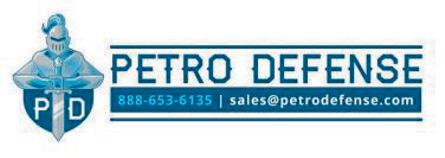
might be interested that run dedicated lanes or are near their home and away point every day.
I think that’ll continue to be a portion of our business. It’s certainly still a part of our internal fleet. But like any alternative, it takes the right application, it takes the right user and certainly somebody that’s looking for an alternative that is obviously greener but also has some positive impact to the bottom line. It’s a business that to us has proven that in the right application can help grow your business by saving money on fuel and certainly being more consistent in fuel costs and operational costs based on that price.
Weber: We look at diesel as an opportunity for us. With all NTIs we look at the parcel size and the availability of circulation around the back of the building. We put in even a small amount of diesel lanes for trucking in the back every opportunity that we can. [Gasoline] consumption is falling in the United States for the average consumer. People are working from home and such. At the end of the day, freight has still got to move. And there are not enough truckers on the road now, so you look at that diesel paradigm and say, OK, where am I going to grow gallons in a marketplace that’s declining?
Diesel to me is that bright spot.
Reichling: Diesel’s certainly going to continue to play a big part. I don’t think there’s really a [cur rently viable] large-scale alternative for freight transportation. I think diesel will continue to play a part there.
I think for us it’s also continuing to under stand how inside the box can also play a role. You know, as Jim had mentioned, it’s a declining fuel industry as far as volume goes. A bigger part of that is going to be driven by CAFE standards and
fuel-efficient vehicles. And certainly, the last three years have changed traffic patterns with work from home and everything associated with it. I think just understanding what we can do inside the box as well—whether it’s a clean store, good product offerings, commodities, you know, household items people need every day—will to continue to drive traffic into our stores for the next 20, 30, 40 years as we see a transition in fuel offerings.
Keith Reid is editor-in-chief of Fuels Market News. He can be reached at kreid@fmnweb.com.
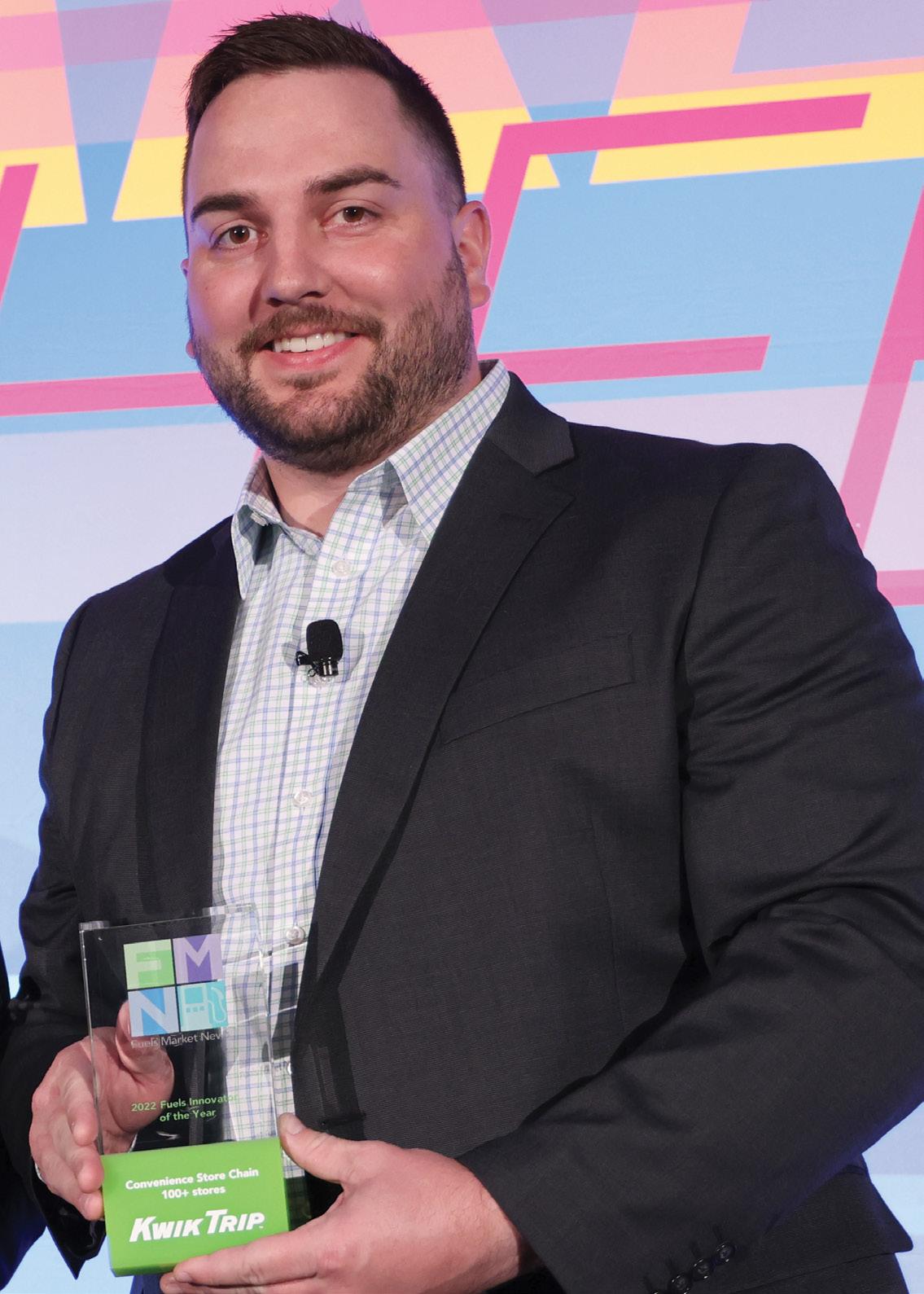
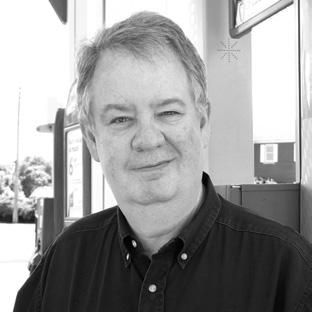
“Like any alternative, it must be the right application for this certain carrier or business that’s trying to use it.”Jeff Reichling, Kwik Trip’s general manager of fuel operations, accepts the award for Kwik Trip.



Know whether you can afford to follow the competition. EdgePetrol provides real-time weighted and blended margin to independent retailers.

The American Coalition for Ethanol (ACE) is a grassroots ethanol advocacy organization, uniting ethanol producers, farmers, investors, cellulosic biofuel stakeholders and businesses in support of our mission dedicated to making American ethanol the consumer fuel of choice. Since 1987, ACE has been advocating for pub lic policies that support biofuels, developing new markets and infrastructure for ethanol and communicating the benefits of biofuels to policymakers, the media and the general pub lic. ACE’s grassroots members put a face on the issues that matter most to the biofuels industry, and we work to proactively advance ethanol priorities through member-driven activities that include interactions with policy leaders at advo cacy events in Washington, D.C., and around the country.

Advanced Digital Data Inc. (ADD Systems) has been providing computer solutions for the petro leum, propane and convenience store industry since 1973. Today, we provide a full spectrum of “best of breed” products and services for our customers. Since its inception, ADD Systems has focused exclusively on providing turnkey software and hardware solutions for the energy distribution and related markets. With a broad suite of solutions that can accommodate any size operation, we have attracted a diverse client base that includes local, regional and national petro leum and propane distributors, fuel wholesalers, convenience store operators and gasoline jobbers.
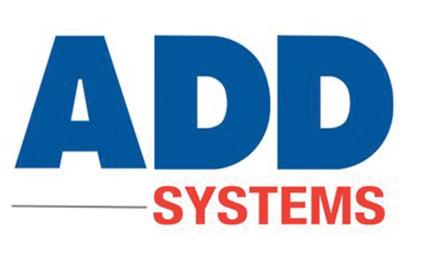
Fuels Market News would like to thank the sponsors who helped support the inaugural 2022 FMN Fuels Innovator of the Year Award.
Founded in 2015, Black Buffalo has created some of the world’s finest smokeless tobacco alterna tive products, backed by over 20,000 hours of research and development. Black Buffalo is the only tobacco alternative that delivers the same experience as traditional smokeless products, just without the tobacco—the taste, the texture, the rich dark color and, yeah, the nicotine. Black Buffalo’s smokeless tobacco alternative products contain pharmaceutical-grade nicotine, which is an addictive chemical, and Black Buffalo’s prod ucts are intended for use solely by adults age 21 and over who are existing users of tobacco or nicotine products.

their fuel pricing decisions, with customer case studies showing margin increases of three pence per litre (16 cents per gallon), volume increases of 20% and profit increases of 18%. By understand ing the key elements that go into setting the ideal pole sign price (volumes, margins, competitions and—of course—profit), EdgePetrol has wrapped software around the brains of some of the best retailers in the business and is still building and creating solutions based on their feedback today.
BTC POWER is a leading manufacturer of electric vehicle charging systems in the North American market, headquartered in Santa Ana, California. BTC POWER designs and manufactures AC Level 2 and DC Fast Chargers for operation in private, commercial, workplace and highway locations to charge electric passenger vehicles and mediumand heavy-duty electric vehicles such as electric school buses, shuttle and transit buses, as well as Class 8 trucks. It recently introduced its 180 kW All-In-One (AiO) DC Fast Charger. This is the latest of the new Gen4 product family, providing an 80% EV battery charge in as little as 12.5 minutes.

Gorman-Rupp designs and manufactures a vast array of innovative pumps and pump systems for water, wastewater, construction, industrial, municipal, petroleum, original equipment, agriculture and fire suppression applications. Gorman-Rupp companies engineer pumps that address evolving petroleum market needs as new fuels, new vehicles and new transportation systems emerge. Our technology powers the movement of petroleum products from the well to the refinery to the fueling station. Solutions range from our Roto-Prime® series for the safe bulk handling of volatile fluids to National Pump’s vertical turbine pumping systems.
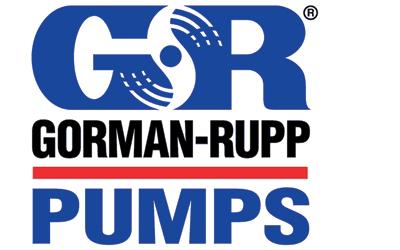
EdgePetrol provides pricing software that gives station owners real-time accurate insight to help them combat reducing volumes and aggressive competition by making better pricing decisions. Eighteen of the Top 50 U.K. independent retail ers, along with major oil companies and hundreds of other stations, trust EdgePetrol to help make
Invenco is a global provider of secure payment processing and customer engagement solutions for the retail fuel and convenience markets. Invenco’s range of products include outdoor payment terminals and cloud-based software services. Invenco continues to build on its legacy of ground-up engineering in security and rugged automation to deliver robust technology solutions to petroleum and other retail segments. Invenco works through its network of partners to deliver geographically optimized versions of its products around the world. Invenco was recently acquired by Vontier Corporation and is now a part of Gilbarco Veeder-Root.

iRely ’s commitment to customer success has made the company a global leader in digital transformation, providing best-in-class software for commodity management, petroleum distribu tion, retail, grain operations and agribusinesses. Headquartered in Fort Wayne, Indiana, with offices in Chicago, New Jersey, Texas, California, London, Bangalore (India) and Makati City (Philippines), iRely has nearly 40 years of expe rience delivering end-to-end enterprise resource planning (ERP) and commodity trading and risk management (CTRM) solutions to simplify complex business processes through a single point of truth. iRely has leveraged its deep industry experience and expertise to build genuine, lasting partnerships with over 500 customers in more than 25 countries.
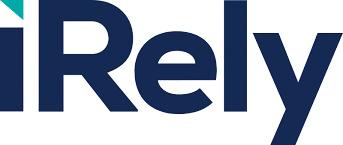
Since 1994, MidContinental Chemical Company (MCC) has built a reputation for delivering superior results for our customers. We view our industry-leading company as a problem solver, not simply a provider of commodity chemicals. We manufacture and distribute high quality petroleum additives that enhance the perfor mance of fuels and lubricating oils in vehicles, equipment and machinery. Our products, inno vative programs and specialized services reduce the cost of operations and improve profitability for our customers. We have sales offices located strategically throughout North America to provide comprehensive solutions and services to customers.


For over 30 years, Lock America has been an innovative market leader in a wide range of indus tries that demand lock and security hardware. Lock America now offers gas dispenser locks that protect against credit card skimming devices and other theft. The easy-to-retrofit Lock America High Security System replaces the “universal” locks found now on most gas dispensers. This high security system, built around a non-dupli catable key and a virtually pick-proof mechanism, provides each location or unit with its own unique key code with the option of installing a master key system. These gas pump locks, based on Lock America’s decades of performance in the gaming and vending industry, retrofit virtually every dispenser.
At North American Bancard, we pride our selves on being a diverse family of thinkers and innovators that are reimagining how business is done. By offering business solutions in credit card processing, ecommerce/gateway, mobile payments and cash advances for merchants of all sizes, NAB is committed to strengthening the communities we live and work in. NAB’s most important resource is our people. We’re proud to offer benefits that help our team members further their overall well-being through unique initiatives that are both personally and profes sionally fulfilling. By working at NAB, we’re all striving toward the common goal of simplifying the customer experience.


